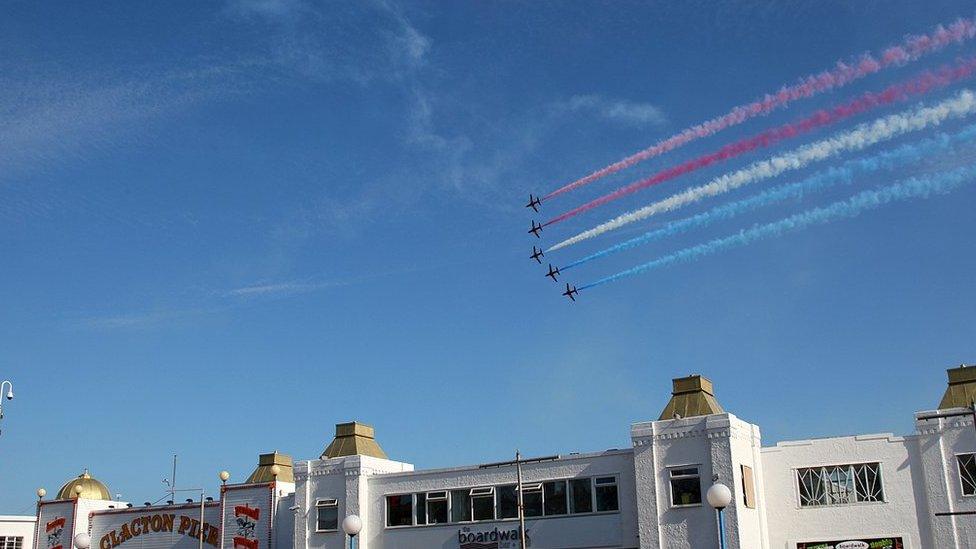Shoreham air crash: How will it affect other shows?
- Published
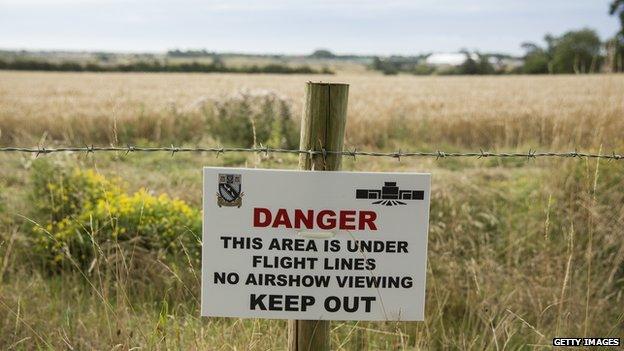
Last weekend's fatal crash at an air show at Shoreham in southern England has raised questions about aircraft safety, and how such a tragic event could best be prevented in future.
There are almost 200 air shows and displays taking place across the UK this year and they come only second to football in popularity as a paid spectator sport - last year five million of us paid to see an air show.
As air crash investigators now set about reconstructing the sequence of events at Shoreham, the issue facing the air display circuit is how this crash will affect future shows.
In the immediate aftermath, one show said it was halting its planned air display though in their announcement, the organisers of CarFest South in Hampshire said they "hope to hold future air events at future festivals".
So far nobody else has followed their lead and many organisers have said their shows will go ahead - but all have been discussing their plans with the regulators, the Civil Aviation Authority (CAA).

August Bank Holiday air shows
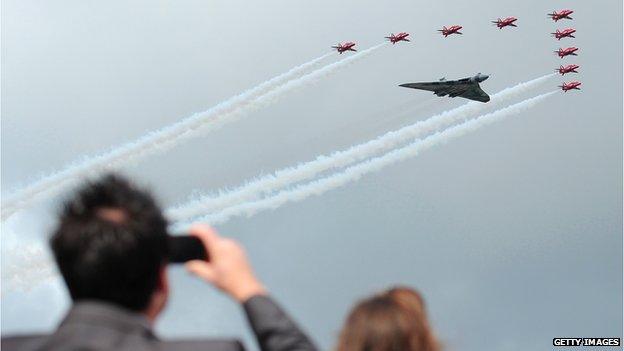
This weekend is a key date in the air show calendar, with eight air shows or displays taking place over the next few days:
27-28 Aug: Clacton Airshow, Essex
27-29 Aug: Dartmouth Royal Regatta, Devon (a Strikemaster jet's routine has been amended)
29-30 Aug: Dunsfold Wings and Wheels, Surrey
29-30 Aug: Rhyl Air Show, Denbighshire, North Wales
29 Aug: Skyline Airshow, Durham Tees Valley Airport, Cleveland (postponed until May 2016)
30 Aug: Little Gransden Air & Car Show, Cambridgeshire (a Hawker Hunter has been replaced by a Yak-11)
30 Aug: Cold War Jets Open Day, Bruntingthorpe Proving Grounds, Leicestershire
30-31 Aug: Wings and Wheels, Halfpenny Green, Wolverhampton (two places restricted to flypasts)
31 Aug: Props and Pistons, East Kirkby, Lincolnshire

One of the bigger events this weekend is Clacton's air show in Essex. Here the flying will take place over the sea.
Nigel Brown of Tendring District Council says: "The CAA saw all risk assessments for upcoming shows during the week, and has signed off on our show. But we are not complacent - and we have since met with fire and safety officials to again go through our plans."
The CAA has already tightened the rules for vintage jets like the 1960s-era Hawker Hunter jet which crashed at Shoreham during its flying routine. They will be restricted to simple flypasts rather than any more complex manoeuvres when flying over land.
Rising costs
In the future, the main consequence of the Shoreham crash that could change the way air shows are run, is the cost of insuring the aircraft.
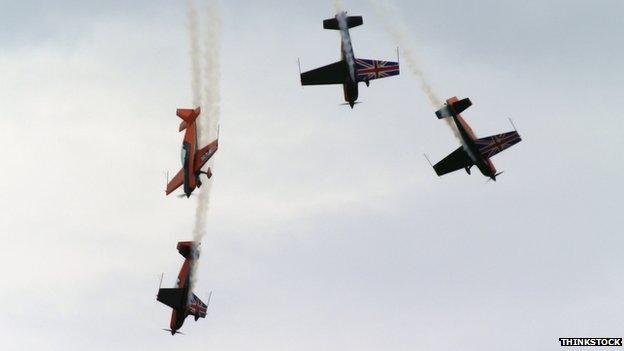
In future, aerobatic displays could be left to specialist aircraft like these
Costs vary enormously. It all depends on the type of aircraft, the pilot's experience and the type of flying the craft is expected to do. Currently a relatively simple 1930s Tiger Moth biplane might cost £15,000 a year to insure, while a jet fighter might cost more than £100,000.
Several aviation insurance insiders say these figures are definitely going to rise - the only debate is by how much.
"Insurers are far less likely to want to take a risk when it comes to display aircraft," says Peter Matcham of Alan & Thomas - one of the few firms specialising in this type of aviation insurance.
"The majority of insurers are going to want to pull away from that."
Mike Wood, who is a former RAF fast jet pilot and instructor, and for the last 15 years has been an air show organiser, goes further. He says he expects insurance costs to double.
"Currently it costs roughly £8-10,000 to insure an air display - and of course the aircraft operators have their own insurance as well. But if you are the organiser, I can see this being perhaps £16-20,000 in the future."
Insurers could also seek to make insurance policies more restrictive for certain types of display aircraft like vintage jets, he says - limiting the types of flying routine a pilot can perform, though there could be problems in defining this in a policy.
Fewer jets
The likely impact is that the cost of having a jet at your air display could become prohibitive.
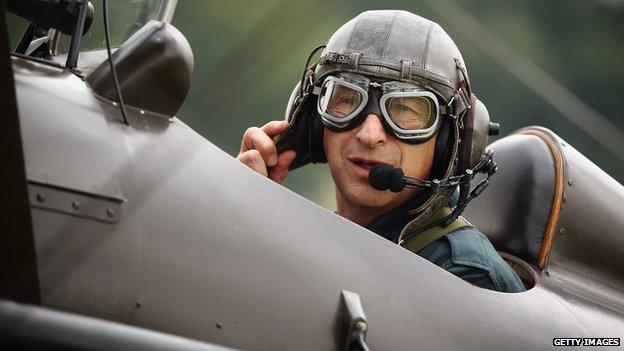
Insurance costs for the owners of display aircraft are likely to rise, say insiders
"We will see fewer fast jets displaying, which is unfortunate," says Peter Matcham.
Mike Wood, who is organising three shows in the coming days - including Rhyl in north Wales and the Scottish Airshow at Ayr - says he has had to shop around to get value for money: "Lower-cost planes could be the way ahead in future," he said.
However, while the flying of fast jets may be affected, others point out that many smaller shows may not be affected because they don't usually include jets in their line-up.
"Most aerobatics in lighter aircraft are within the airfield boundary, so if anything does go wrong, members of the public are not involved," says Guy Black of the Historic Aircraft Collection, which includes a World War Two Spitfire and Hurricane in its hangars, as well as 1930s Hawker biplanes.
And even if the flight restrictions remain, most spectators want to get a decent photo of an aircraft - and for that a simple flypast is ideal.
"You get a cacophony of clicks as people's cameras go off whenever an aircraft does a pass - that picture is what most people want to go home with," says Mr Black.
Sell-out shows
So far there is no sign that fewer spectators will go to air shows. For instance, Clacton's organisers say they expect 200,000 over the weekend - the same figure as last year.
Indeed, this summer has seen sell-out shows across the country - one reason being because it is the last time visitors will get the chance to see the massive delta-winged Vulcan bomber fly - which once carried Britain's nuclear deterrent.
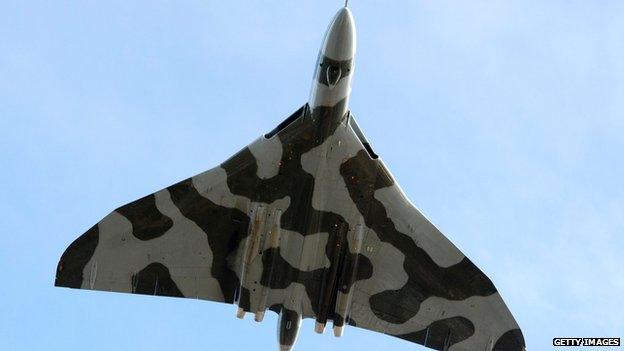
This year is the last time Vulcan XH558 will fly, its operator has said
Vulcan XH558 took to the skies again in 2008 after an extensive restoration, but her flying days are now finally numbered.
"Although we are all confident XH558 is currently as safe as any aircraft flying today, her structure and systems are already more than 10% beyond the flying hours of any other Vulcan," the Vulcan to the Sky Trust, which looks after the aircraft, said in a press release..
From next year when the Vulcan is no longer flying, it is possible that fewer casual visitors will be tempted by air shows - although there are plenty of other iconic aircraft for the enthusiasts to see.
And when investigators complete their report on what exactly led to the Hawker Hunter crash at Shoreham the effect on the air show sector will become clearer:
But higher insurance premiums are almost certain.
Faced with higher costs, it is likely there will be fewer air displays where spectators can see fast jets fly. More events may come to rely on slower, and cheaper, aircraft to bring in the crowds.
We could also see higher priced entry tickets. But while the nature of displays may change - with more conservative flight routines - there will still be plenty of air shows in coming years.
- Published27 August 2015
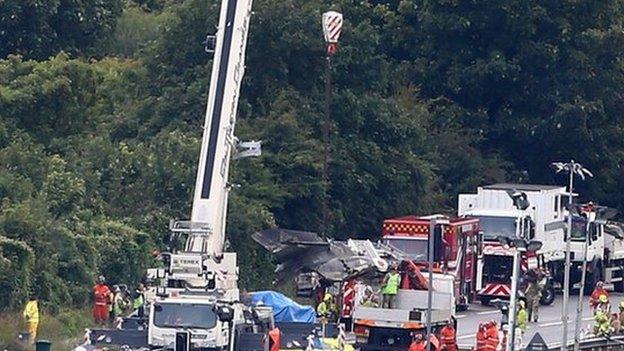
- Published28 August 2015
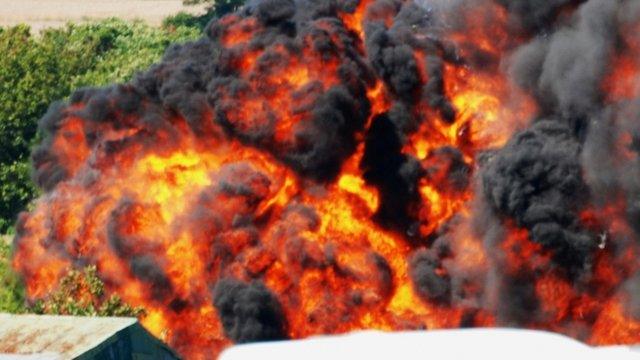
- Published25 August 2015
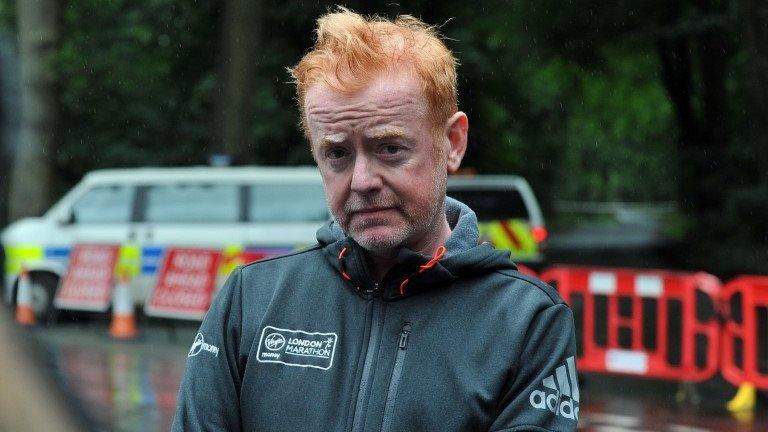
- Published24 August 2015
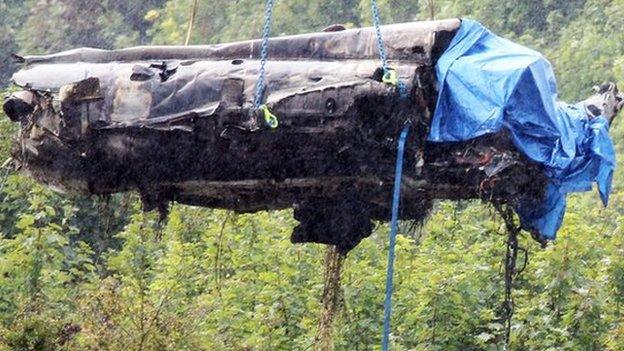
- Published2 September 2015
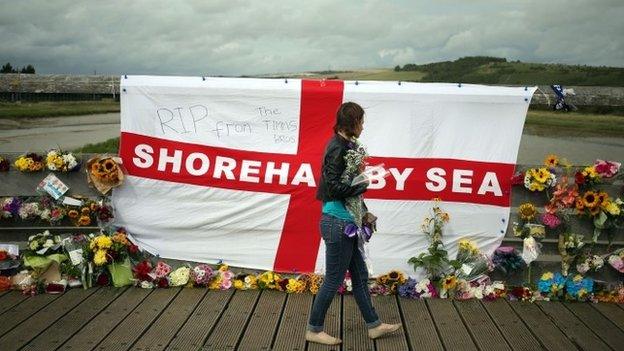
- Published24 August 2015
